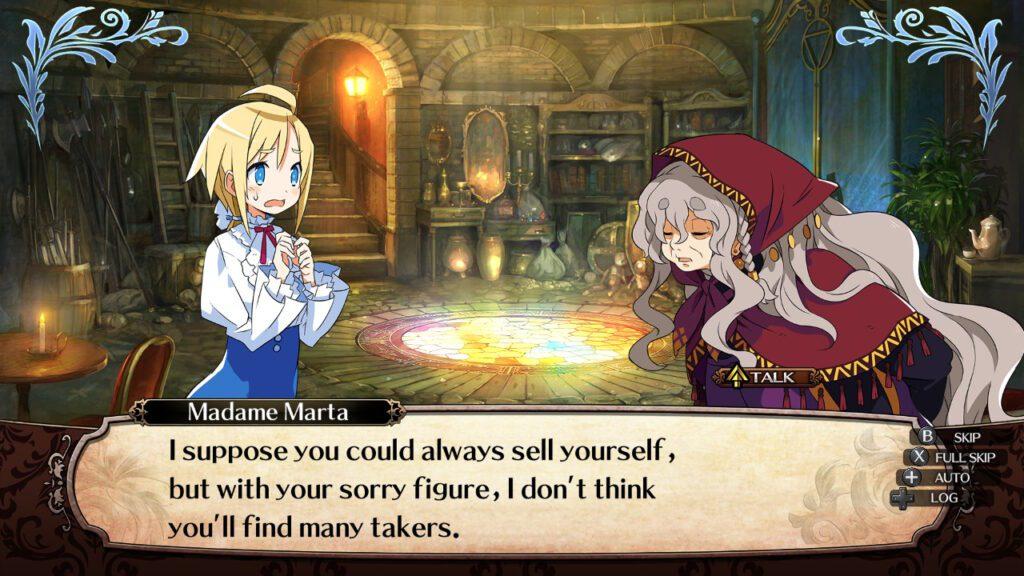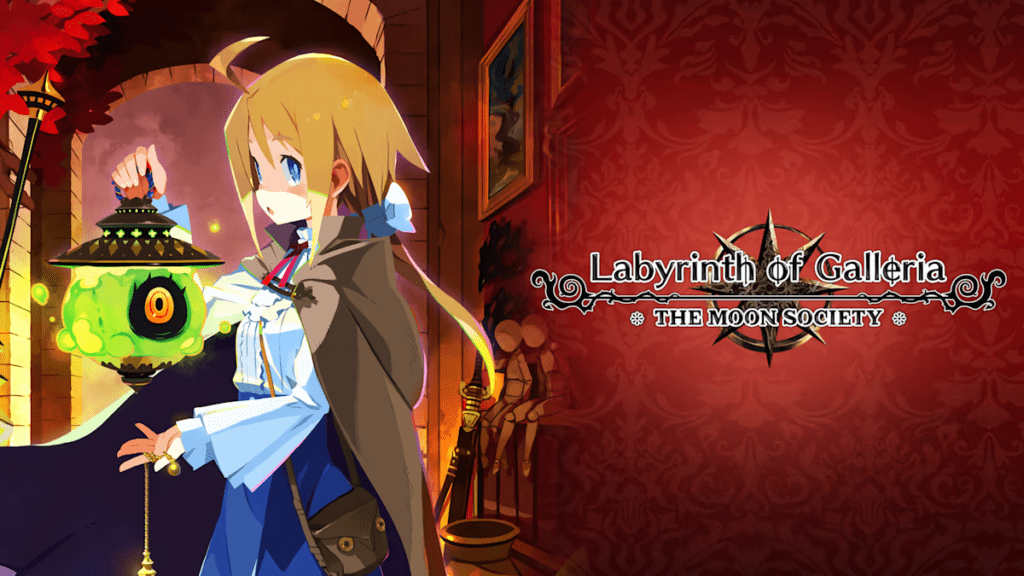
We’re honestly awash in first person dungeon crawler RPGs on the Switch these days. If you’re a fan of the genre, this is an absolutely fantastic time to be a gamer. With titles like Demon Gaze Extra (review here), Kowloon High School Chronicle (review here) and Saviors Of Sapphire Wings (review here) having made their way to the Switch successfully along with a bevy of other titles, it’s no surprise that there are more coming. It’s a great genre and it’s only getting better!
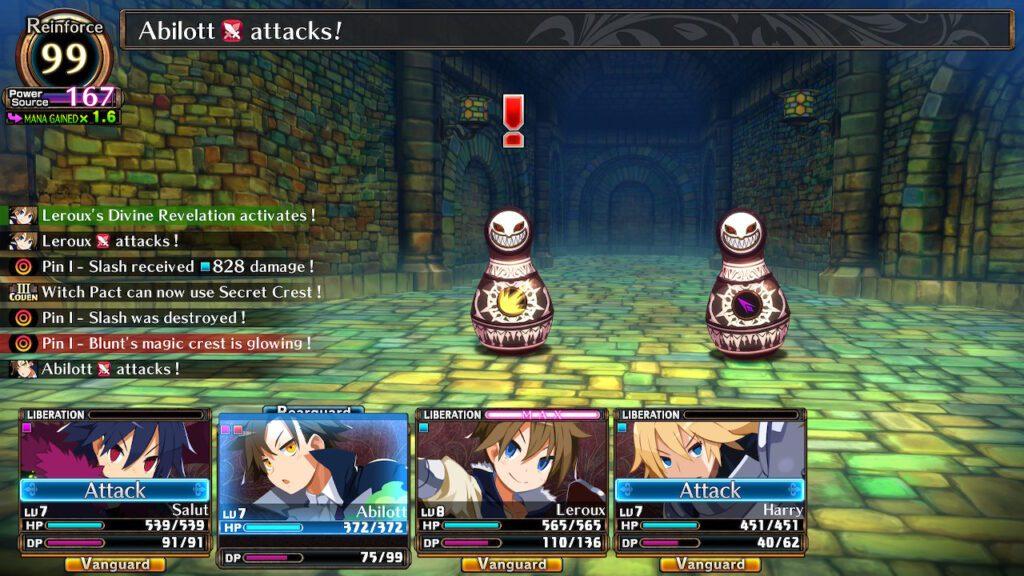
The latest title to enter the genre is Labyrinth of Galleria: The Moon Society from NIS America, purveyor of a significant portion of the first person dungeon RPG market! But Galleria (it’s a long title) isn’t just another RPG. There’s a bit more going on under the hood than you might expect here and you’re in for a treat! It might not look like it at first but this is one complex RPG.
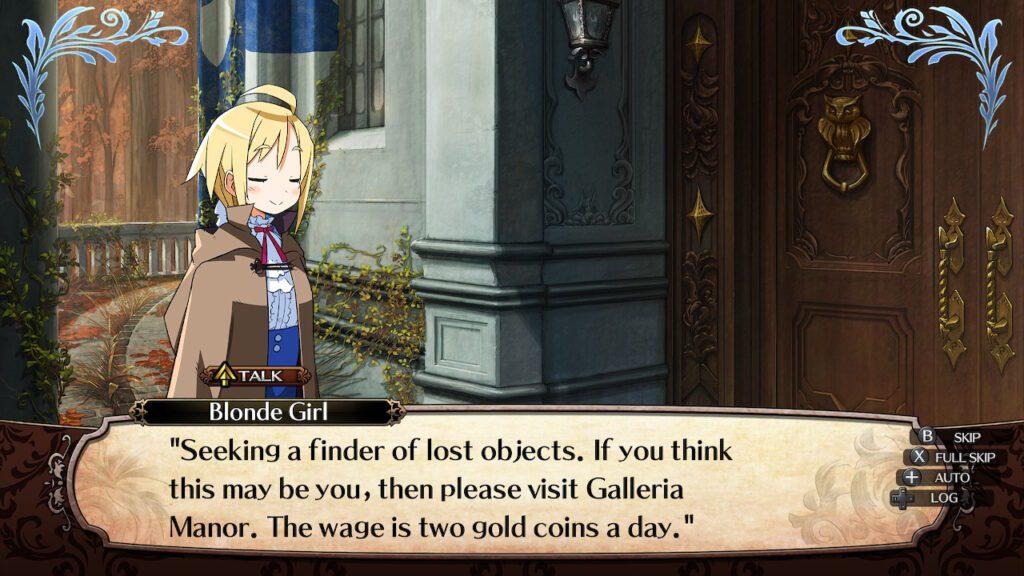
In Labyrinth of Galleria, you play Eureka, a young noblewoman who has answered a job flyer at a strange mansion out in the woods. She shows up and an odd witch, Madame Marta, tests her skills right off the bat, pushing her to summon a spirit which merges with Eureka, saddling her with Fantie, a wandering spirit who can inhabit the Lanterne de Fantasmagorie, a magical lantern which allows Fantie to travel into the labyrinth. Confused yet? Don’t worry, it all shakes out after a bit.
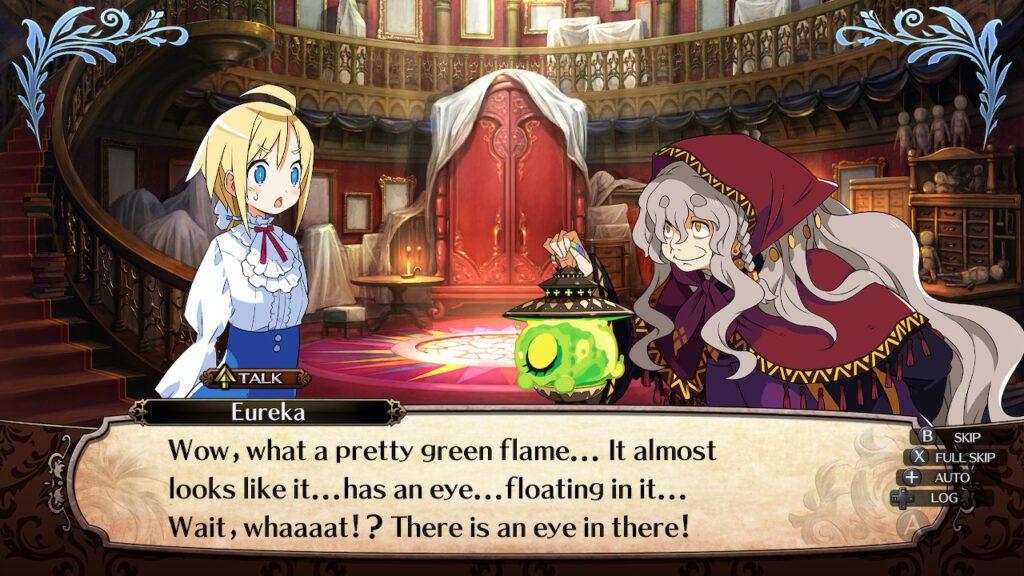
Suffice it to say that Eureka and Fantie are a team and use magical skills to explore a strange mystic labyrinth full of monsters, treasure, and magical Curios hidden beneath the mansion. Along the way there’s a surprising amount of dialogue, more than a few twists, and a heck of a lot of gameplay. The story takes a while to get going but it’s quite compelling and as you play through the 50 or so hours in the game (assuming you aren’t a completist), there’s more than enough going on to suit most players.
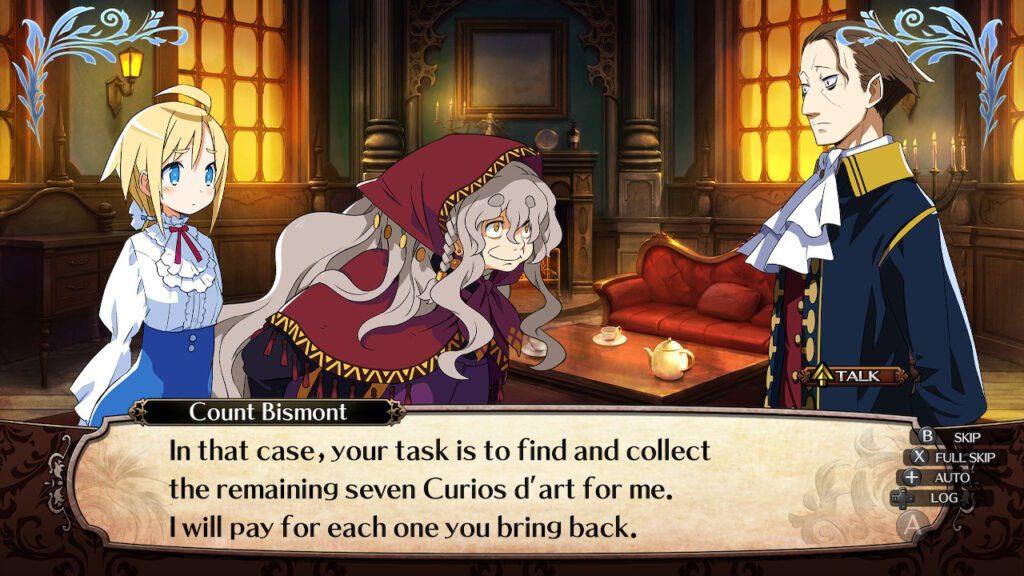
Gameplay will take up the vast majority of your time here though so let’s dig in. Fantie isn’t your only tool here. The witch helps you to enlist puppet soldiers, magically animated automatons to help explore the labyrinth and fight the monsters within because any human that goes in comes out a pile of twitching shredded flesh. Fun! You can choose from a variety of character types (and tons of profile art choices) but you only start off with a few characters in your party. In order to make more puppet soldiers, you’ll need parts and souls gathered from the labyrinth and to do that you’ll need to explore!
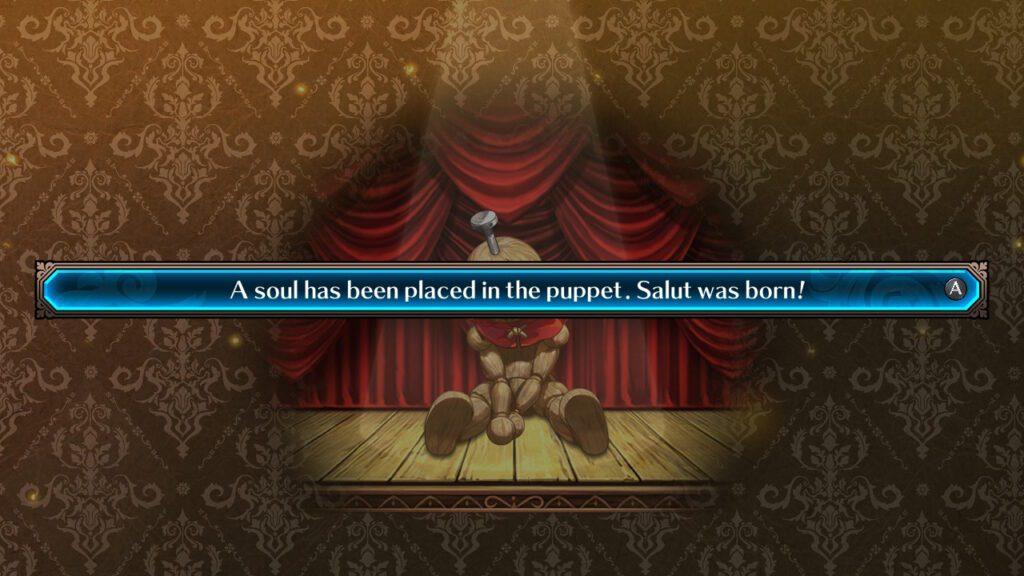
As this is a standard first person dungeon RPG, you’ll be moving and mapping on a square grid and enemies move one space every time you do. You can see them as generic moving spheres and when you touch them, battle commences. Cross through a doorway and you can usually get away but some battles cannot be escaped so be careful!
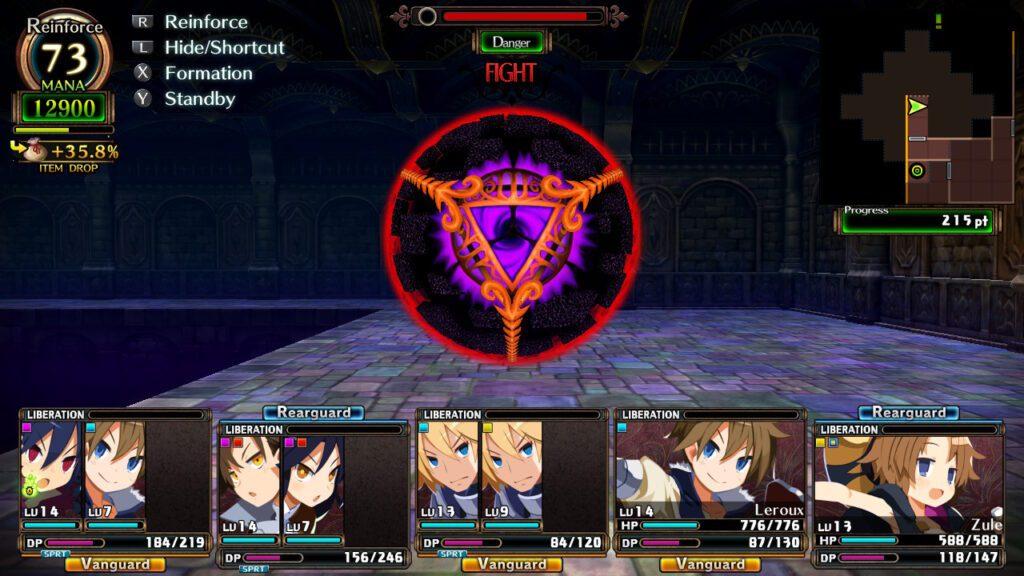
The mechanics in Galleria get pretty complex but very basically, combat consists of attacking, blocking (which is called Fortifying Coven), and using Donum abilities which are basically magic spells. Unlike other games, your Donum abilities are not innate but instead are based on the ‘pacts’ that your puppets are in. These pacts bestow a variety of powers which you can then utilize in battle if you have enough Donum points (MP). At first, that’s all you’ll do. Fight, kill, fight, kill, and return to the home base to power up. The standard array of healing items and weapons are here but there’s a catch in Galleria. You can’t use healing items in battle!
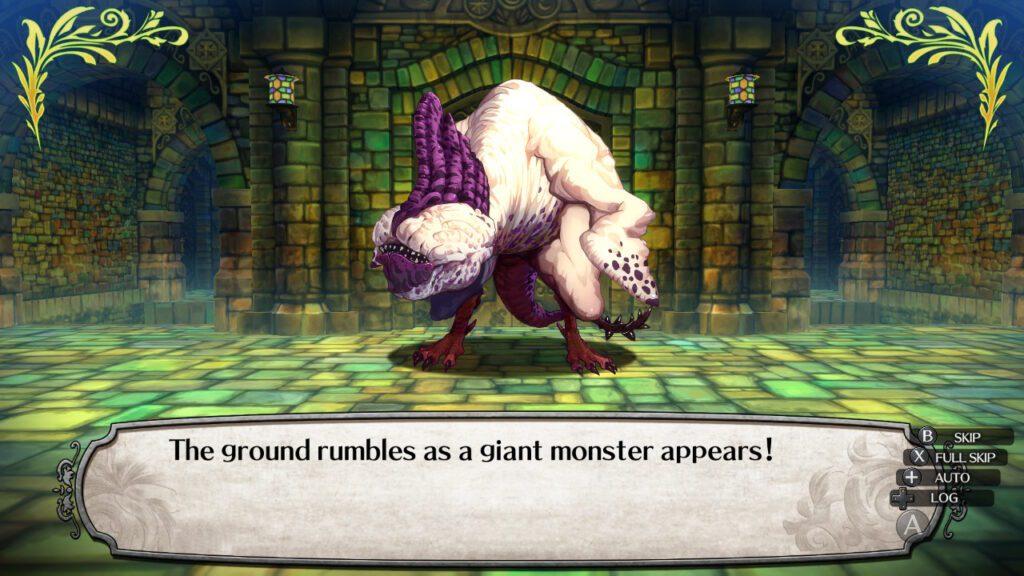
Naturally, this sort of twist makes things a lot more difficult and if you go too deep, the enemies will definitely slaughter you! There’s more than a bit of grind involved here, but once you get far enough, you can return to the home base and Madame Marta will offer you some abilities in exchange for the souls you’ve collected in battle, allowing you to heal after every combat, use additional donum abilities, or most importantly, lower the difficulty! Things get even more complex when you start adding larger pacts, allowing you to have three puppets in each slot for a total of 15 playable characters at a time. Two are in support positions and one is under your direct control but there’s still a heck of a lot going on once everyone is kitted out! The usual forward and rear positions for characters are available but in Galleria you can put characters in the wrong slot if you want to, allowing for a mismatch attack that weakens your characters, so you’ll really have to pay attention to your assignments!
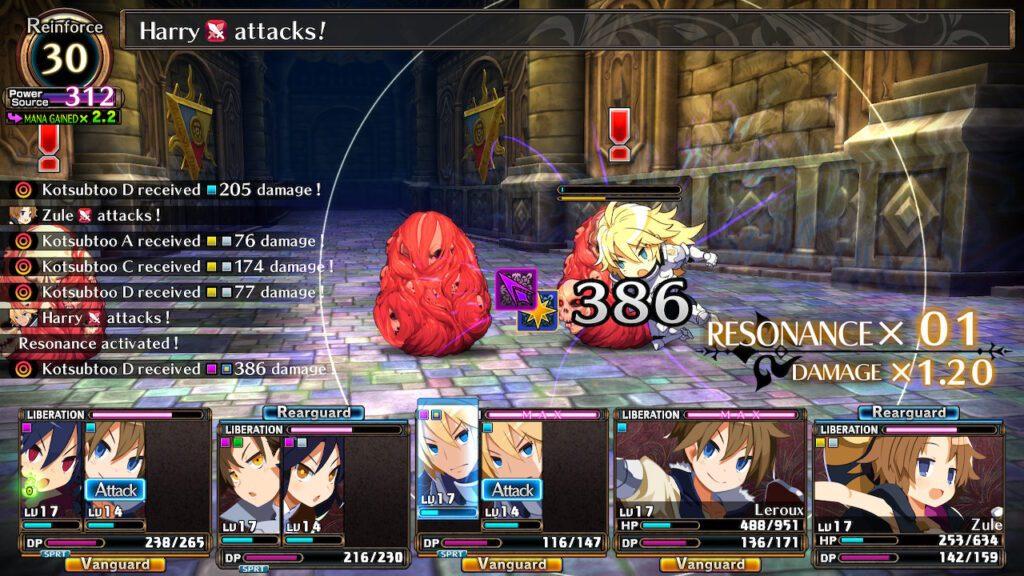
That’s a lot so far, right? Each time you return, you add to your soul bank and can sell items as well. You’ll also be equipping your soliders with new gear (this can also be done in dungeons of course) and buying a ton of items to help your quest out. You can also check on side quests and fulfill them with the treasure you’ve hauled out of the dungeon, netting yourself a bunch of extra sweet gear and cash. Other menu options like Alchemy (once unlocked) allow you to unseal special items and weapons (for a price) that you have retrieved and even to add more skills and abilities if you’ve got the souls for it.
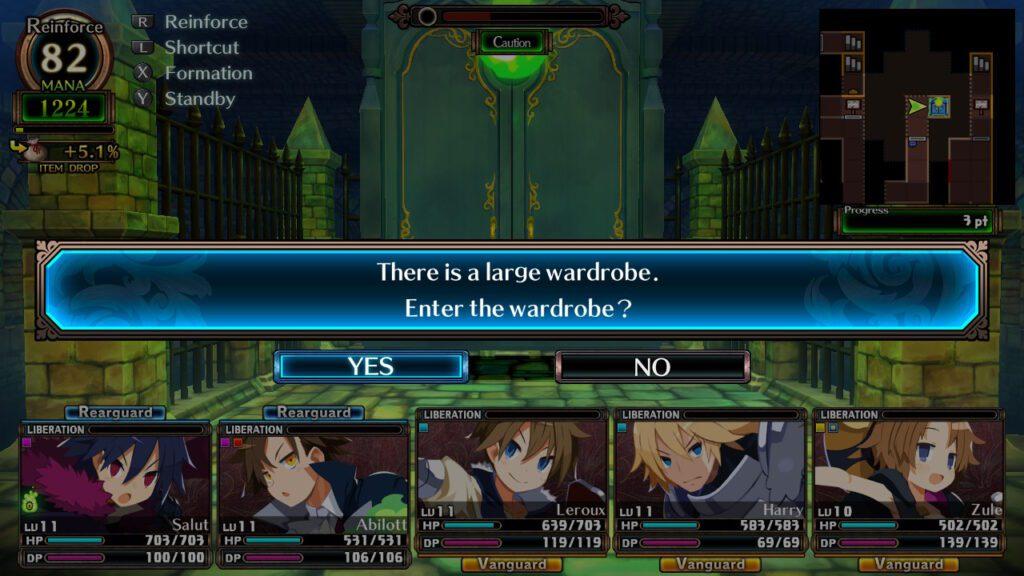
As you can see, there’s a heck of a lot going on and that explanation only touches the surface…we haven’t even gotten into the vast number of in-dungeon abilities you acquire, level designs, and overall mechanics and honestly, there’s not enough time here to do so. You’ll just have to go through the game yourself and find out all the cool stuff. Galleria has an incredible tutorial system baked right into the storyline but the downside is that it takes a fair amount of time to get through and the pacing choices in the early game aren’t exactly the best. You’ll have quite a few hours in before you figure out what all is going on and get a rhythm going in order to grind your way through and retrieve the rare Curios D’Art for your benefactor.
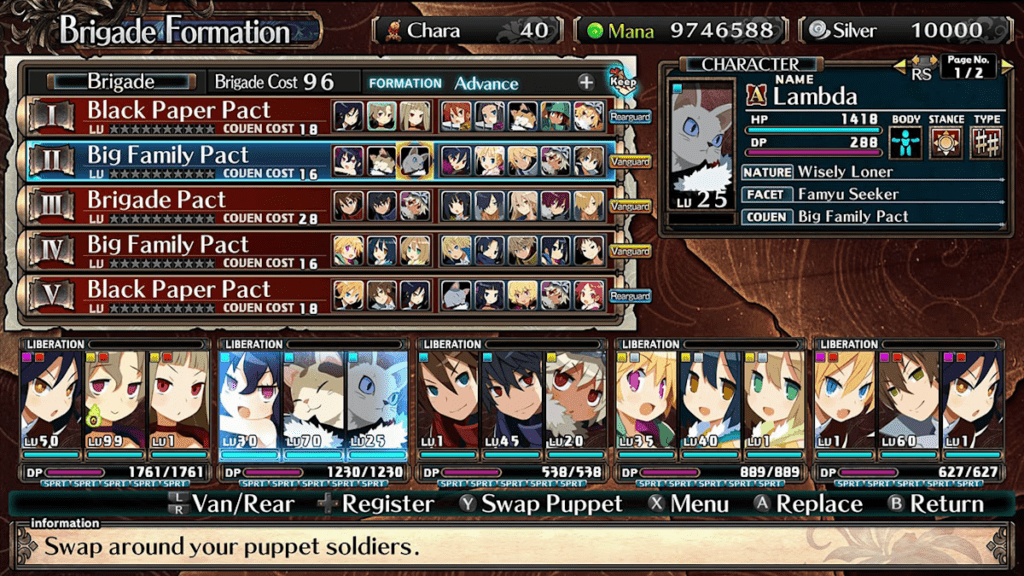
What’s important to know here is that Labyrinth of Galleria: The Moon Society is remarkably fun! The gameplay loop is gratifying, progress is steady aside from a few learning curve difficulties, and there’s plenty of variety in the various parts of the dungeon. It’s an incredibly hard game too though, so if you just want a casual experience, definitely spring for the lowered difficulty…it’s worth your time. Learning the ins and outs of the game is half the fun, so while you look at all the weird monsters, fall off of precipice after precipice and slaughter your way through the labyrinth, you’ll definitely be having a blast!
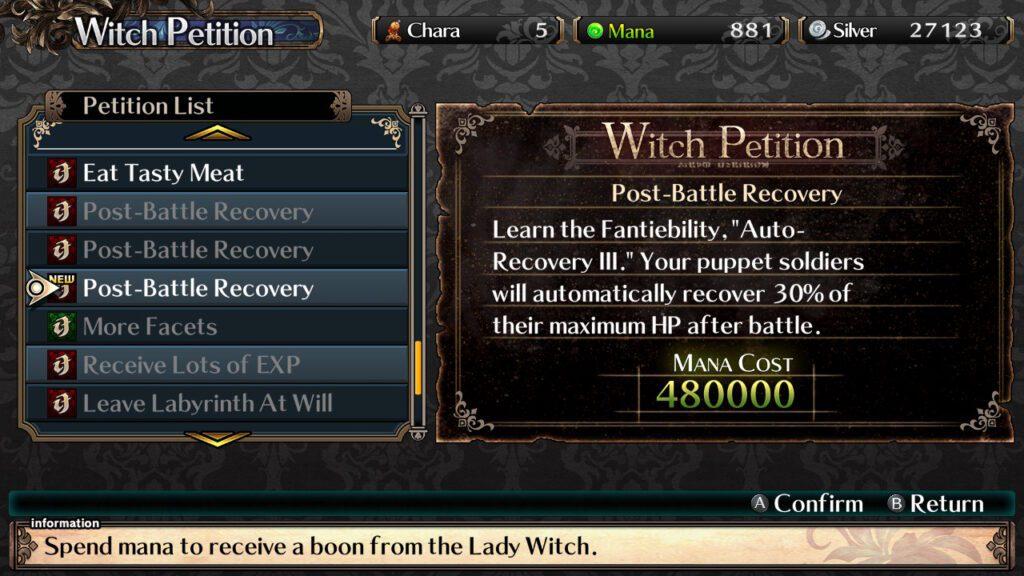
There are a few surprises in Galleria as well. The first, and probably the most obvious, is that the game is fully voice acted in English. Eureka’s perkiness takes a bit of getting used to but there’s a very strong voice cast here and between the excellent voice work and the solid plot, you’re in for a treat! The sound effects and music don’t disappoint either and the themes in Galleria are remarkably catchy without becoming irritating. It’s a fine balance and the composer did a truly enjoyable job here. The visuals are also quite good with anime-style characters, interesting dungeon designs and absolutely wild enemy artwork that will occasionally leave you reeling in shock! This is one great looking game and the enemy variety and design work especially is outstanding!
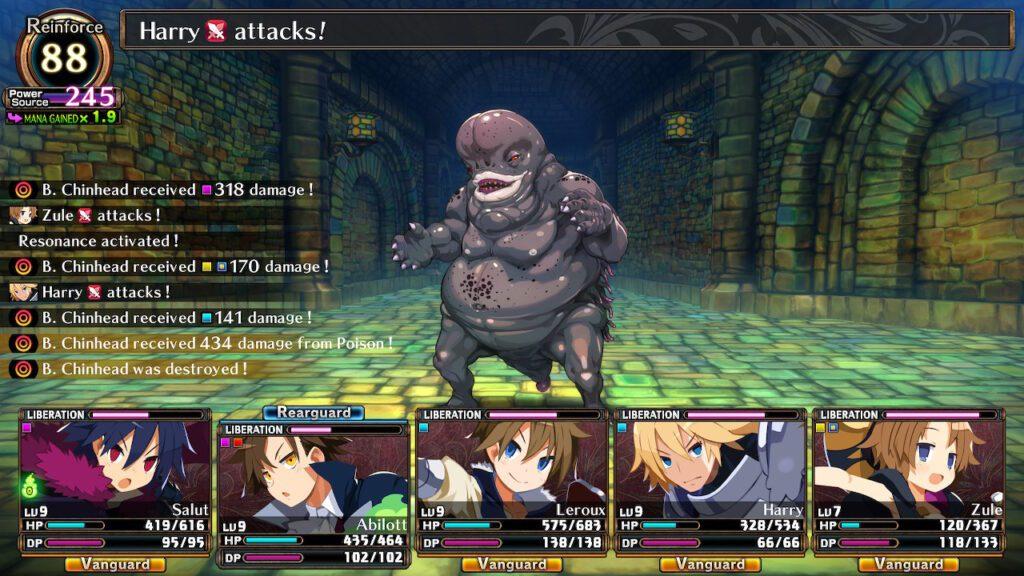
Additionally, the game itself offers a variety of challenges that may surprise you. It’s easy to fall off of pretty much anything in Galleria and impacts will kill you, especially if you fall multiple floors and aren’t leveled up very far. Even if you survive, you’ll be on a lower level where the enemies are outrageously overpowered and you’re in big trouble! Sure, it’s one way to get places fast, but definitely not a recommended one. This is probably the most frustrating part of the game because bumping a shoulder button by accident can kill you fast or cripple your run. You also eventually earn the ability to break down most walls in the game. Destructible environments are an interesting twist for this type of RPG and they’re more than a bit overused here. You’ll constantly be breaking down wall after wall, using up your Reinforce points to do so and it’s a necessary part of the gameplay. Don’t think you can just walk around and take the long way either, as this is an absolutely integral mechanic to progress!
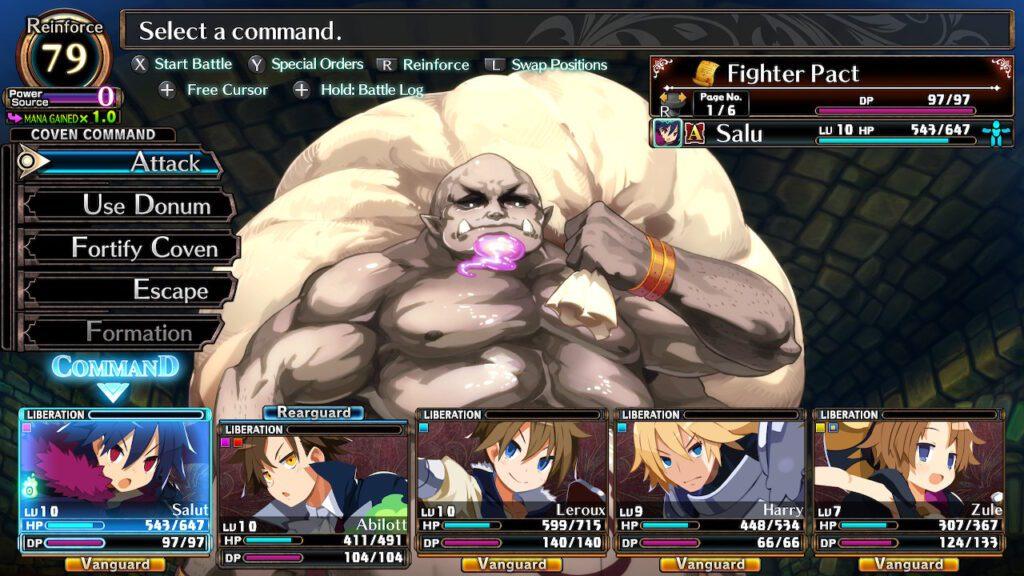
There’s really no way to go through all the nuances of Labyrinth of Galleria: The Moon Society in a review because the game is simply too complex. That’s a good thing though and aside from the difficulty, long and somewhat vague tutorial structure, and well, falling a lot, it’s an incredibly compelling experience! A fantastic story awaits you with solid RPG gaming and detailed character and menu management systems that are also noticeably user-friendly and well-designed. The devs over at NIS really did an excellent job with the user interface in Galleria and the slick, straightforward controls push up the quality of the game an extra couple of notches, even though things definitely aren’t intuitive at first.
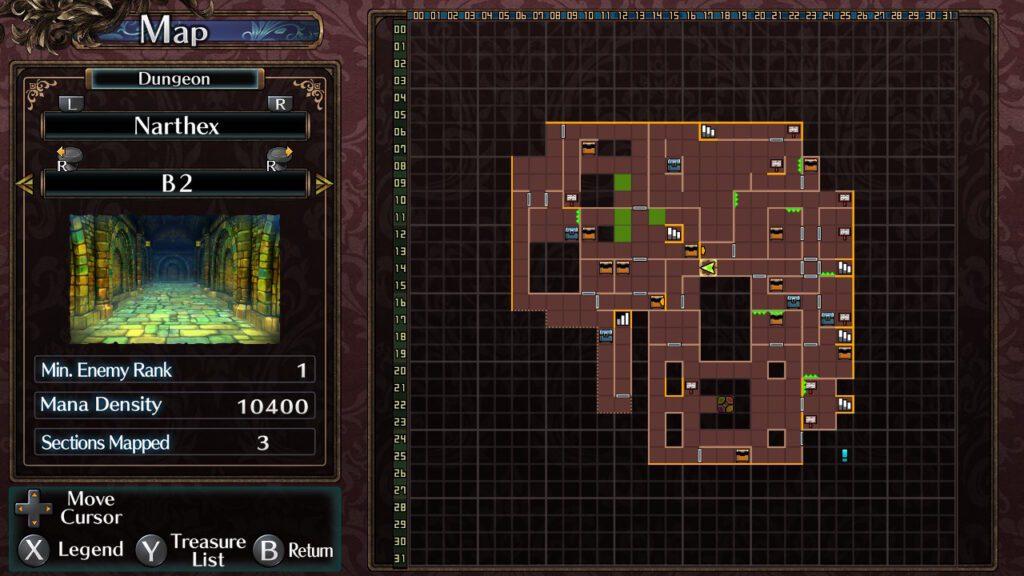
What you’re really getting here is a fun game that is well-made, interesting and unique, all wrapped in a first person dungeon shell that’s both charming and pretty. At $50 it’s a bit cheaper than a AAA game, but you still get AAA level gameplay and more here. Labyrinth of Galleria: The Moon Society is definitely worth your time and Eureka and Fantie are definitely going to work their way into your heart if you give them a chance! There’s plenty of weirdness here too and the story probably won’t go where you’d expect. This is one dungeon RPG that’s certainly worth adding to your collection!
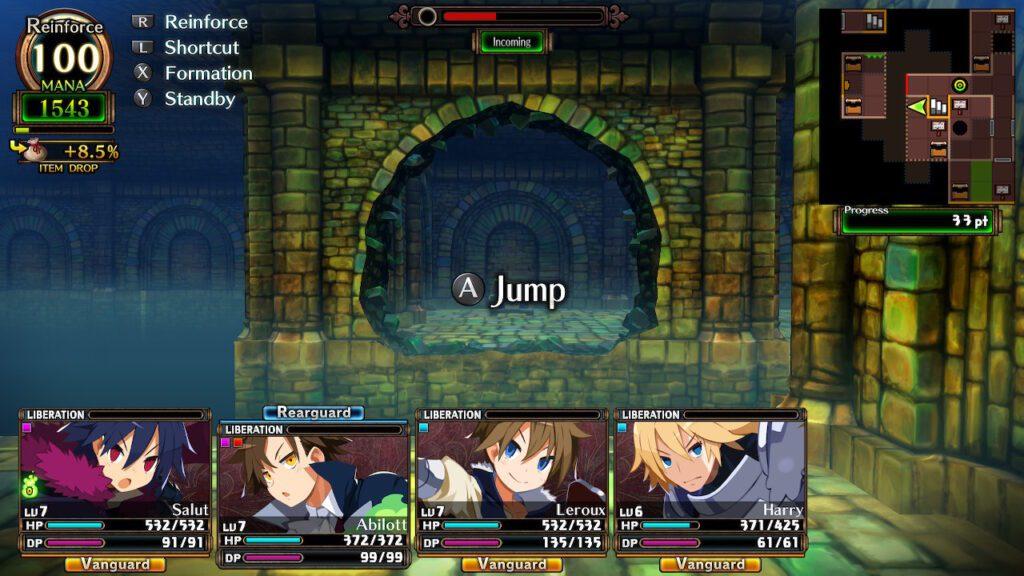
This review is based on a digital copy of Labyrinth of Galleria: The Moon Society provided by the publisher. It was played on a Nintendo Switch in both docked and undocked modes and was excellent in both. Labyrinth of Galleria: The Moon Society is also available for PS4 and PC on Steam.
